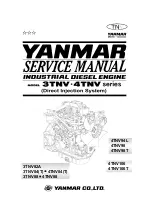
0512
3
Avviamento
La messa in funzione deve avvenire in modo graduale, evi-
tando di applicare immediatamente il carico massimo richie-
sto dalla macchina, per evitare e correggere eventuali ano-
malie presenti a causa di un’errata applicazione. Il rodaggio
non è condizione essenziale per un buon funzionamento del
riduttore, in quanto le moderne tecniche di costruzione degli
ingranaggi e delle fusioni, l’elevata pulizia degli organi interni
e le ottime caratteristiche dei lubrificanti impiegati garantisco-
no una sicura protezione dei componenti interni anche nelle
prime fasi di lavoro.
Manutenzione
L’elevato grado di finitura degli organi interni garantisce un
corretto funzionamento con una
minima manutenzione. In generale valgono le seguenti rego-
le: controllo periodico della pulizia esterna dei gruppi, soprat-
tutto nelle zone maggiormente interessate al raffreddamento;
controllo periodico delle eventuali perdite di lubrificante, so-
prattutto nelle zone degli anelli di tenuta.
Per i gruppi lubrificati a vita, privi di qualsiasi tappo per l’olio,
non è necessaria alcuna manutenzione straordinaria, salvo
quanto riportato ai punti precedenti.
Montaggio del motore sulla flangia
IEC B5/B14
Controllare che le tolleranze dell’albero e della flangia del
motore siano corrispondenti almeno ad una classe di qualità
“normale”. Pulire accuratamente l’albero, il piano ed il cen-
traggio della flangia da sporco o tracce di vernice. Non
forzare l’albero motore nel cavo di entrata del riduttore. Nel
caso non sia possibile controllare la tolleranza della linguetta
sull’albero motore ed assicurarsi che sia alloggiata corretta-
mente nella sua sede. Applicare un velo di antiossidante in
modo da prevenire l’ossidazione da contatto. Utilizzare moto-
ri di buona qualità per garantire il corretto funzionamento
esente da vibrazioni o rumorosità. Prima di montare il ridutto-
re sulla macchina verificare che l’albero di uscita ruoti nel
verso giusto.
Starting up
The unit should be started up gradually: do not immediately
apply the maximum load the machine is able to take; look for
and correct any malfunction that may be caused by incorrect
mounting. Running-in is not essential for the reduction unit to
run properly since modern construction techniques for the
gears and castings, the extreme cleanliness of the internal
parts, and the excellent qualities of the lubricants used, gua-
rantee the proper mechanical functioning from the first opera-
tion.
Servicing
The high quality finish of the internal parts ensures that the
unit will work correctly with only a minimum amount of servi-
cing. Generally speaking, the following rules should be follo-
wed: periodically check that the exterior of the assembly is
clean, especially in the cooling areas; periodically check to
see if there are any leaks, especially in the areas around the
sealing. Units that are lubricated for life and thus do not have
any oil plugs do not require any special maintenance except
as stated above.
Mounting the motor on the IEC B5/
B14 flange
Check that the tolerance of the motor shaft and the motor
flange comply with at least one ‘normal’ class of quality. Ca-
refully clean off any trace of dirt or paint from the shaft, the
centering diameter and the face of the flange. Do not force
the electric motor shaft into the gearbox motor sleeve. If this
is not possible, check the tolerance of the motor key and en-
sure that it is correctly fitted. Apply antioxidative protection to
the shaft in order to prevent fretting corrosion. Good quality
motors should be used in order to ensure that the unit works
correctly, without vibrations or noise. Before mounting the
unit on the machine, check that the main shaft of the reduc-
tion unit rotates in the right direction.
In tutti questi casi consultare il Servizio Tecnico.
Utilizzo come moltiplicatore;
Utilizzo come argano di sollevamento;
Utilizzo in posizioni non previste a catalogo;
Utilizzo in ambiente con pressione diversa da quella at-
mosferica;
Utilizzo in ambiente con temperatura < -35°C o > +50°C
If any of these cases apply, please contact the technical
department.
Used to increase speed;
Used as a hoist;
Used in mounting positions not shown in the cata-
logue;
Used in environment pressure other than atmospheric
pressure;
Used in places with temperatures < -35°C or > +50°C
Critical applications
Applicazioni critiche




























